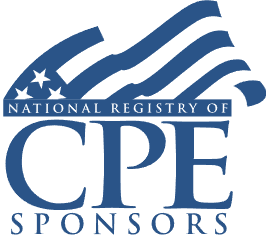Implementing ASU 2018-08 for Contributions Received and Made
Reciprocal vs. Nonreciprocal, Conditional vs. Unconditional and Required Disclosures

Course Details
- smart_display Format
On-Demand
- signal_cellular_alt Difficulty Level
Intermediate
- work Practice Area
Accounting
- event Date
Wednesday, August 21, 2019
- schedule Time
1:00 PM E.T.
- timer Program Length
110 minutes
-
BARBRI is a NASBA CPE sponsor and this 110-minute webinar is accredited for 2.0 CPE credits.
-
Live Online
On Demand
This course will guide not-for-profit (NFP) advisers and businesses that receive or make contributions subject to ASU 2018-08 through its reporting requirements. The panel will discuss distinguishing between contributions and exchanges, conditional vs. nonconditional contributions, and implementing the required modifications.
Description
New revenue recognition standards created questions about how not-for-profit (NFP) recipients and donors should record asset transfers. In June 2018, the FASB issued ASU 2018-08, Not-for-Profit Entities, "Clarifying the Scope and the Accounting Guidance for Contributions Received and Made." With implementation dates both past and upcoming, (applicable to annual periods beginning after June 15, 2018, or beginning after Dec. 15, 2018, depending on whether the entity is a resource recipient or resource provider) understanding these changes is critical.
This ASU outlines how to determine whether grants are accounted for as exchange transactions subject to ASC 606 or contributions; and if a contribution, whether the transaction is conditional or unconditional.
There is a decision tree flow-chart included in the ASU to assist entities in classifying transactions. Although its issuance is a clarification, determining the classification of receipts isn't always clear. Sometimes the recipient receives a pass-through award; other times there are performance obligations tied to receipts. This update has a significant impact on the classification of many government grants.
Listen as our panel of experts explains the details of ASU 2018-08, including how to correctly classify, record, and disclose contributions made and received under this update.
Outline
- Overview
- Effective dates
- Reciprocal (exchange) transactions
- Nonreciprocal (contribution) transactions
- Conditional transactions
- Nonconditional transactions
- Application
Benefits
The panel will review these and other noteworthy issues:
- The effective dates of ASU 2018-08
- Financial statement reporting under ASU 2018-08
- Determining whether a contribution is conditional or unconditional
- Determining whether a transaction is reciprocal or nonreciprocal
- Implementing required disclosures
NASBA Details
Learning Objectives
After completing this course, you will be able to:
- Identify exchange transactions
- Ascertain whether a contribution is conditional or unconditional
- Recognize transactions subject to ASU 2018-08
- Determine necessary disclosures under ASU 2018-08
- Field of Study: Accounting
- Level of Knowledge: Intermediate
- Advance Preparation: None
- Teaching Method: Seminar/Lecture
- Delivery Method: Group-Internet (via computer)
- Attendance Monitoring Method: Attendance is monitored electronically via a participant's PIN and through a series of attendance verification prompts displayed throughout the program
- Prerequisite: Three years+ business or public firm experience at mid-level within the organization, preparing complex tax forms and schedules; supervisory authority over other preparers/accountants. Specific knowledge and understanding of cost allocation principles; familiarity with government standards for nonprofit organizations receiving federal grant monies

Strafford Publications, Inc. is registered with the National Association of State Boards of Accountancy (NASBA) as a sponsor of continuing professional education on the National Registry of CPE Sponsors. State boards of Accountancy have final authority on the acceptance of individual courses for CPE Credits. Complaints regarding registered sponsons may be submitted to NASBA through its website: www.nasbaregistry.org.
Unlimited access to premium CLE courses:
- Annual access
- Available live and on-demand
- Best for attorneys and legal professionals
Unlimited access to premium CPE courses.:
- Annual access
- Available live and on-demand
- Best for CPAs and tax professionals
Unlimited access to premium CLE, CPE, Professional Skills and Practice-Ready courses.:
- Annual access
- Available live and on-demand
- Best for legal, accounting, and tax professionals
Unlimited access to Professional Skills and Practice-Ready courses:
- Annual access
- Available on-demand
- Best for new attorneys
Related Courses
Recommended Resources
Gain a Competitive Edge Through Efficient CPE Strategies
- Learning & Development
- Business & Professional Skills
- Career Advancement
